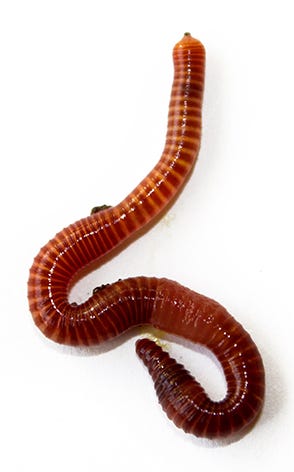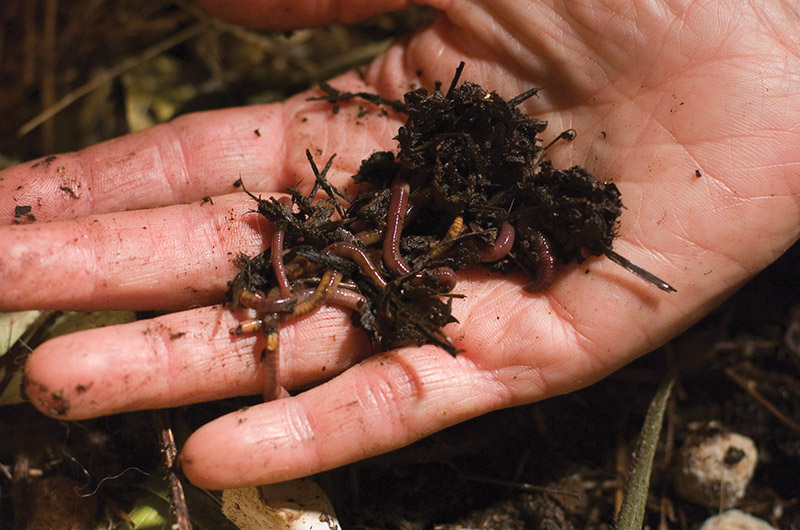Making Best Use Of the Benefits of Red Wiggler Worms: A Comprehensive Handbook for Home Gardeners and Urban Farmers
In the world of lasting gardening techniques, red wiggler worms stand as unhonored heroes, quietly changing natural waste right into nutrient-rich castings that can work wonders for dirt health and wellness. As home gardeners and urban farmers progressively look for affordable and ecologically pleasant means to enhance their yards, the potential advantages of utilizing the power of red wigglers can not be overemphasized. From lessening kitchen waste to cultivating much healthier plants, the application of these humble animals offers a myriad of benefits. By checking out the complexities of how to properly care for and take full advantage of the benefits of red wiggler worms, people can unlock a wealth of possibilities for improving the sustainability and performance of their horticulture ventures.
Recognizing Red Wiggler Worms
Red Wiggler worms, renowned for their reliable composting capabilities, are a types of earthworms widely utilized in vermiculture practices. These worms, clinically called Eisenia fetida, thrive in decomposing organic product, making them perfect candidates for composting (Red Wiggler Worms). Red Wigglers are starved eaters, with the ability of consuming their very own weight in natural waste daily. Their gastrointestinal procedure breaks down raw material right into nutrient-rich castings, which are a beneficial source for enriching dirt and advertising plant development.
One secret feature of Red Wiggler worms is their reproductive price. These hermaphroditic creatures have both women and male reproductive body organs, allowing them to reproduce quickly under desirable conditions. A mature Red Wiggler can generate numerous children in a brief duration, guaranteeing a steady population within a composting system.

Establishing a Worm Container
When establishing a worm bin for vermiculture purposes, appropriate prep work and focus to information are crucial for developing a helpful environment for Red Wiggler worms,. Begin by choosing an appropriate container for your worm container. This can be a plastic or wooden container with a lid to preserve dampness degrees and secure the worms from light. Guarantee that the bin has water drainage holes near the bottom to avoid waterlogging.

Location the worm container in an amazing, dark place far from straight sunlight and severe temperature levels. On a regular basis check the dampness degrees, including water if the bed linen feels completely dry or flaky. Feed the worms a balanced diet of fruit and vegetable scraps, avoiding citrus fruits, onions, and spicy foods. By following these actions, you can establish a prospering worm bin that will effectively refine organic waste into nutrient-rich vermicompost for your garden.
Feeding and Preserving Worms
Making certain a healthy and well balanced diet plan is critical for the health and productivity of Red Wiggler worms in a vermiculture system. It is important to stay clear of feeding them citrus fruits, onions, garlic, milk items, meat, and oily foods as these can be hazardous to the worms or cause unpleasant odors in the bin.
Correct moisture levels are likewise important for the health of Red Wiggler worms. By carefully monitoring their diet regimen, wetness, and ecological problems, home garden enthusiasts and metropolitan farmers can maintain a healthy and effective Red Wiggler worm population for composting functions.
Harvesting Worm Spreadings
To successfully extract nutrient-rich worm castings from the vermicompost, a systematic harvesting process is essential for taking full advantage of the composting benefits. Red Wiggler Worms. The first step in gathering worm castings is to encourage the worms to move away of the bin. This can be attained by putting fresh food scraps on one side and leaving the opposite side uninterrupted for a few days. Once the majority of worms have actually dodged with fresh food, the spreadings can be gathered from the contrary side.
After the castings have actually been gathered, it is essential to separate any go to these guys type of continuing to be worms from the spreadings to stay clear of damaging them during storage or application. One effective approach is to develop cone-shaped piles of castings under bright light. Worms will instinctively move far from the light, permitting simple separation and elimination.
Last but not least, the gathered worm spreadings ought to be saved in a great, dark, and dry area to maintain their quality and efficiency as a nutrient-rich dirt change. By adhering to these actions, home garden enthusiasts and urban farmers can take full advantage of the benefits of red wiggler Read Full Article worms in their vermicomposting systems.
Utilizing Worm Castings in Gardening
The consolidation of nutrient-rich worm castings into garden soil can substantially boost plant growth and general soil wellness. Worm castings, additionally referred to as vermicast, are a natural fertilizer created by red wiggler worms as they break down organic matter. These spreadings are rich in vital nutrients like nitrogen, phosphorus, potassium, and valuable germs that promote plant development and enhance dirt structure.
When utilizing worm spreadings in gardening, it is important to blend them extensively into the soil or utilize them as a leading dressing around plants. The slow-release nature of worm spreadings guarantees a steady supply of nutrients to plants with time, minimizing the threat of nutrient leaching and advertising long-term dirt fertility. In addition, worm castings aid enhance dirt aeration, water retention, and microbial activity, creating a healthy and balanced setting for plant roots to flourish.

Conclusion
In conclusion, the usage of red wiggler worms in home gardening and urban farming can substantially benefit soil health and plant growth. By recognizing exactly how to establish and keep a worm container, feed the worms correctly, and gather their nutrient-rich castings, garden enthusiasts can check it out take full advantage of the benefits of these earthworms. Incorporating worm castings right into horticulture methods can improve soil fertility and general plant performance. Overall, red wiggler worms use a effective and sustainable service for boosting garden and ranch returns.
In the realm of lasting horticulture practices, red wiggler worms stand as unhonored heroes, quietly changing organic waste into nutrient-rich spreadings that can function wonders for dirt wellness.When developing a worm container for vermiculture objectives, correct preparation and focus to information are crucial for developing a helpful environment for Red Wiggler worms. The initial action in harvesting worm spreadings is to urge the worms to move to one side of the bin. Worm castings, also understood as vermicast, are a natural plant food produced by red wiggler worms as they break down natural issue. By understanding just how to set up and maintain a worm bin, feed the worms effectively, and harvest their nutrient-rich spreadings, gardeners can take full advantage of the advantages of these earthworms.